Model Training & Testing: Building Fast, Reliable AI Models
Training and testing are where your AI initiative either proves its worth or stalls out. You can pour cutting-edge algorithms into the pipeline, but if the AI model training and testing loop is slow, brittle, or opaque, real-world value evaporates. In this post, we’ll walk through concrete moves to accelerate training, trim costs, and harden your validation workflow—so every model you ship hits the accuracy and scale the business expects.
Key Takeaways
- Invest in data hygiene. Clean, consistent inputs spare you endless retraining loops and head-scratching failures.
- Optimize for speed and cost. Distributed training, GPUs, smart hyper-parameter tuning, and transfer learning slash cycle times and budgets.
- Validate relentlessly. Sound splits, cross-validation, real-world pilots, and the right metrics prove a model can thrive in production.
- Balance agility and rigor. Rapid iteration and thorough testing aren’t trade-offs—they’re the twin engines of dependable, high-impact AI.
Why AI Model Training and Testing Quality Drives ROI
Training a model can feel like watching paint dry—weeks of GPUs humming only to yield lackluster results. Break the cycle with these three tactics:
Better Data Management
Start with a pristine, well-structured dataset. Standardize the format, strip out duplicates, and patch any missing values before training begins. That upfront investment in data hygiene saves you from the endless retraining loops that hidden errors can trigger.
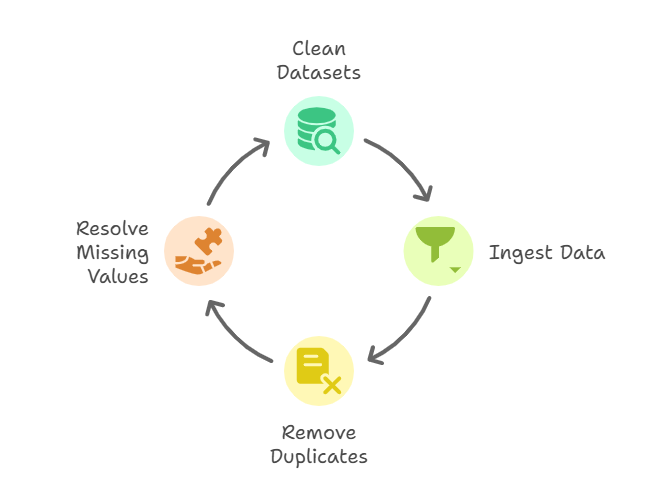
Efficient Workflows
Map the entire training pipeline—data loading, preprocessing, training runs, checkpoint saves—so nothing is done twice. Cache cleaned features, reuse intermediate outputs, and script your experiments end-to-end. That way, you never waste hours rerunning steps you’ve already completed.
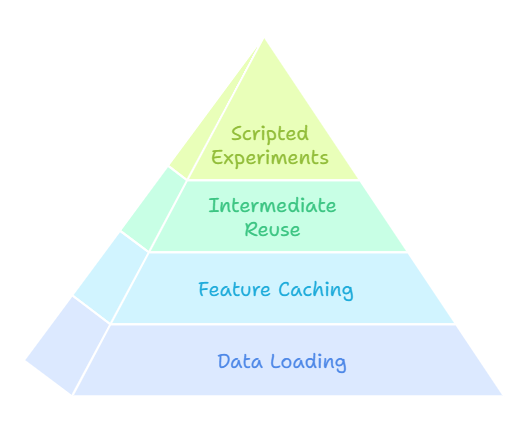
Proactive Monitoring
Track critical signals—loss curves, validation accuracy, even precision—in real time. The instant those lines plateau or spike, pause the run, tweak your hyper-parameters, and save hours you’d otherwise waste finding out at the end that the experiment was doomed.
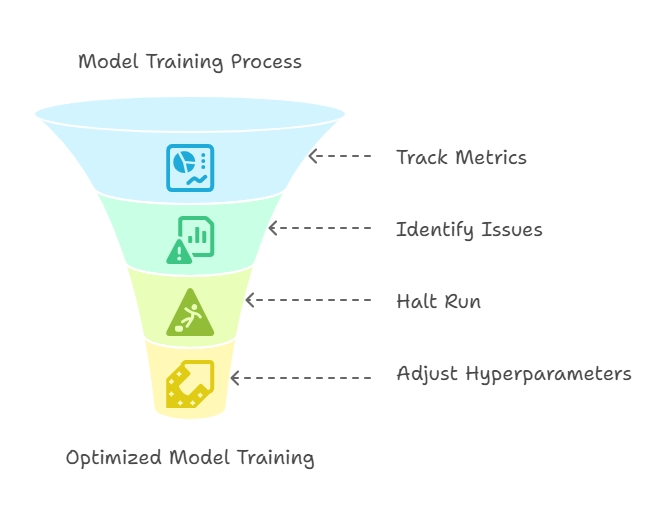
Cut those bottlenecks and you’ll shave days off compute time—while knowing each training run is genuinely steering you toward a production-ready win.
The Cost, Time & Uncertainty Dilemma
Every extra hour of training runs up compute costs—and every extra day pushes back the business payoff. Just as troubling is the lingering question: will the model hold up when it finally meets real-world data?
- High compute costs. GPU clusters and cloud instances aren’t cheap; without tight optimization you can torch a budget long before you see meaningful ROI.
- Time delays. Extended training cycles slow the entire AI roadmap, frustrate stakeholders, and ripple into downstream work—everything from data labeling to deployment stalls.
- Real-world uncertainty. A model that dazzles on the test set can collapse under noisy production data; without rigorous validation you’re essentially flying blind.
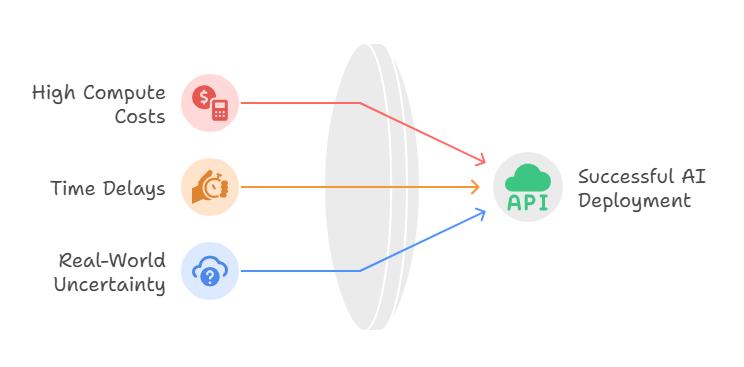
The answer is a disciplined blend of speed and rigor: streamline your training pipelines for efficiency, but weave in thorough testing at every stage so the model that dazzles today still performs when tomorrow’s data rolls in.
Tips for Faster, Smarter AI Model Training and Testing
Below are four battle-tested tactics that shave hours off training time while sharpening model performance—no accuracy sacrificed.
Distributed AI Model Training and Testing
Spread the workload across several machines—or spin up parallel cloud instances—so each batch trains side-by-side. What once took days now wraps up in hours, freeing you to try bolder architectures and wider hyper-parameter sweeps.
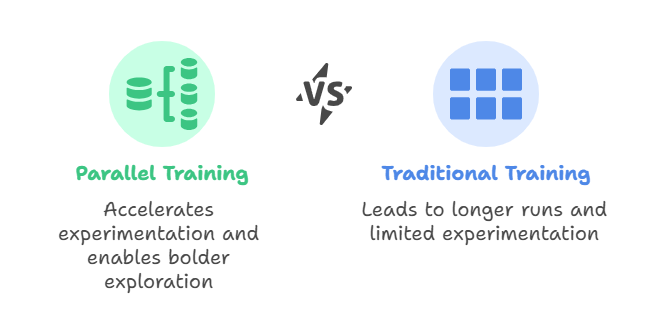
GPU & Accelerator Utilization
Shift compute-hungry models—think large vision or language networks—onto GPUs, or go further with purpose-built accelerators like TPUs or AWS Inferentia. With the right tuning, a single GPU can shrink training cycles from days to hours, delivering speedups of an order of magnitude over CPU-only runs.
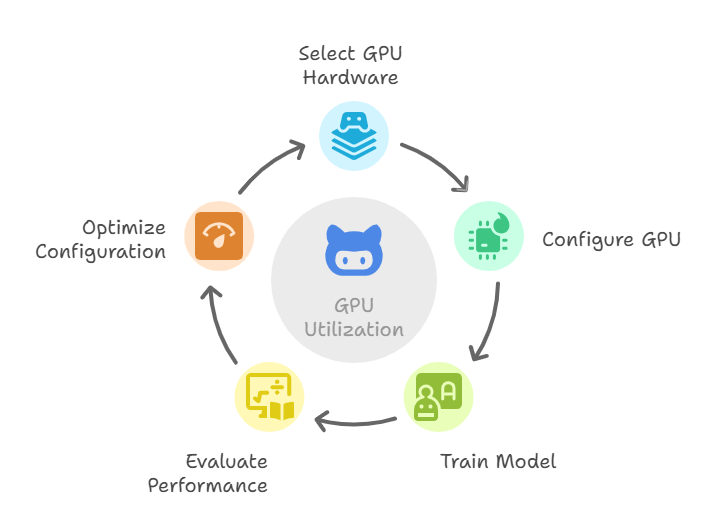
Hyperparameter Tuning
Put hyper-parameter tuning on autopilot: run grid search, random search, or Bayesian optimization to zero in on the optimal learning rate, batch size, and network depth. The right settings can unlock sizable performance gains—no code rewrites required.
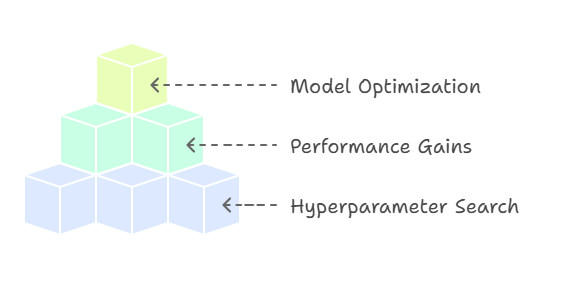
Transfer Learning
Jump-start with a battle-tested, pre-trained model, then fine-tune it on your domain data. This warm start collapses training time and slashes labeling requirements—crucial when examples are scarce. Combine transfer learning with the other tactics above and you’ll speed through iteration cycles, test more ideas per sprint, and lock in production-ready performance while spending a fraction of the compute.
AI Model Training and Testing: Ensuring Reliability
Speed gets you to market, but reliability keeps you there. Build these checkpoints into every training cycle:
- Isolate a test set. Hold back data the model never sees during training—your unbiased scorecard for final evaluation.
- Rotate with k-folds. When data is tight, k-fold cross-validation swaps train/test splits to smooth out lucky (or unlucky) draws and yield sturdier performance estimates.
- Track the right metrics. Accuracy is blunt. Pick precision, recall, F1, ROC-AUC, or R²—whatever best captures the stakes of your use case.
- Pilot in the wild. Roll out in shadow mode or to a small traffic slice and compare predictions with real outcomes to catch edge cases and early drift.
Bake in these safeguards and you’ll ship models that thrive beyond the lab, not just score well in it.
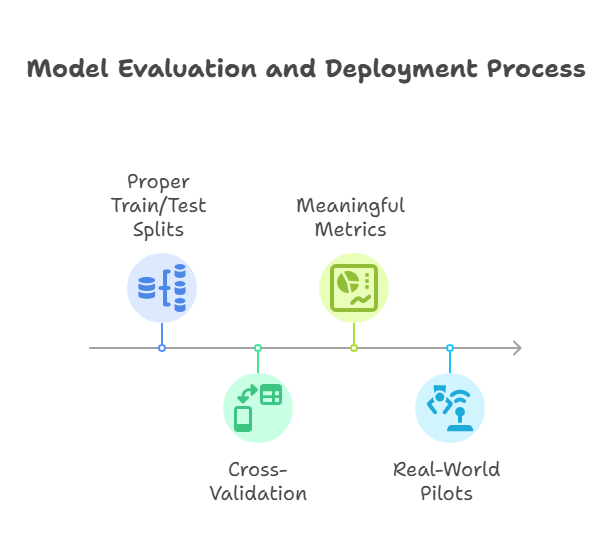
Embed rigorous testing and validation into the pipeline, and you’ll spot issues early, earn stakeholder confidence, and keep your AI delivering consistent, repeatable results.
Bonus Resources
Model Training Checklist (Free Download)
A concise guide covering data prep, hardware selection, hyperparameter tuning, and validation steps—so you never miss a critical task.
Training Optimization Workshop
A focused, hands-on session where our experts audit your pipeline and recommend targeted improvements, saving you time, money, and frustration.
Download our AI model training and testing checklist for step-by-step guidance
Ready to accelerate your AI model training and workflow?
Download the Model Training Checklist now, then book a Training Optimization Workshop for customized advice that slashes compute cost and boost model accuracy.